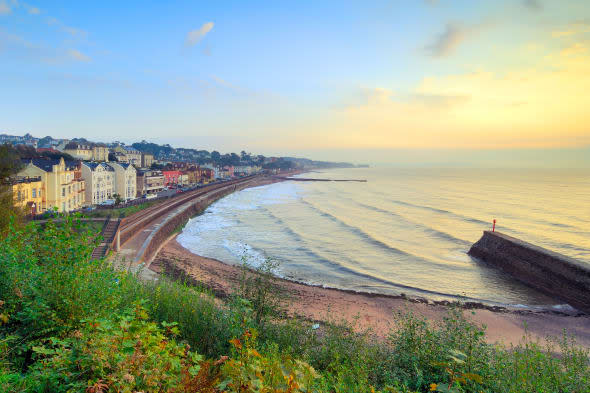Coast-to-coast cycling

So you fancy an epic cycling challenge but you don't have the time, fitness or inclination to ride Lands End to John O'Groats (or vice versa)? Why not think laterally and do a coast-to-coast (C2C) ride instead? It makes a lot of sense because it's a bit more accessible and manageable – while still being a significant challenge. It's for these reasons and more that coast-to-coast rides are the most-popular long-distance cycle journeys in the UK.
Related Searches
Which route?
The most-popular routes for coast-to-coast cyclists (and walkers for what it's worth) all traverse the north of England – where the country is relatively narrow but hilly and scenic. The classic coast-to-coast from St Bees in Cumbria to Robin Hood's Bay in North Yorkshire was originally devised by hillwalking legend Alfred Wainwright. The route travels across the Lake District, the Pennines, the Yorkshire Dales, the Cleveland Hills and the North York Moors. It covers around 140 miles and totals around 3,000m of ascent – as does a popular alternative route from St Bees to Tynemouth, just a little further north on the east coast.
%VIRTUAL-AFCSponserAds%There is another variant called the "Way Of The Roses" slightly lower down the country from Morecombe to Bridlington and a newly devised option called the "Reivers Route" which detours northwards through Kielder Forest. There is no reason you have to stick to an existing route anyway. Why not get some maps and work out what's best for you? The planning is all part of the fun. It is of course possible to do the journey east-to-west, but the UK's prevailing wind is from the south-west so it might be harder work.
How long will it take?
This entirely depends how fit you are and whether you're more interested in putting in some big miles or relaxing and enjoying the scenery. Road cyclists tend to take three to six days to complete the route, though two days is perfectly do-able if you're in good shape and a one-day crossing is within the reach of experienced riders. Different schedules might mean anything between four and 12 hours in the saddle each day – with longer trips allowing more time for local sightseeing and sampling a well-earned pie and pint.
Can I do it off-road?
Yes of course, but it will obviously take longer. The classic route from St Bees to Robin Hood's Bay takes in some fantastic trails and you'll be able to get higher and more "out there" than you would on a road bike. There's an important choice to be made at the start, as the famous "Wheelwright's C2C" takes in some very challenging terrain in the Lake District. If you're not comfortable with carrying your bike as you scramble up a rocky hillside, you might prefer to join the many riders who opt to take the Sustrans route to Keswick instead on the first leg of the ride. After this the route is only moderately difficult – with the effort of riding up hills more of a challenge than the actual geology.
Do I need to go on an organised trip?
There are a variety of operators offering coast-to-coast biking holidays both on and off the road. This appeals to some people treating it as a one-off experience, with all the logistics and practicalities taken care of. There is also the option of arranging your own lodgings but using a van service to have your belongings ferried from one night's stop to the next.
The big advantage of this is that you will then be less encumbered during your ride, making for easier pedalling and a more enjoyable ride. Still, some riders choose to go fully self-supported – either using lightweight camping gear or "credit card touring", which basically means staying at B&Bs while carrying some spare clothes.
Are there any other options?
The only limit to potential routes is the amount of time you have available, though we'd advise against plotting a crossing through London and the South East of England for obvious reasons. A Scottish C2C is being devised by the Sustrans team behind the most-popular English route – if established it would run from Annan on the Solway Firth to the Firth of Forth near Edinburgh. There is a heavily marketed off-road challenge event called Rat Race: The Crossing which sends riders on a challenging journey across the Highlands of Scotland. Wales is also ideal for coast-to-coast routes – north to south or vice versa. Whether on or off road, these are likely to be more challenging than the classic English C2C routes, at least in terms of distance and elevation gained anyway.




